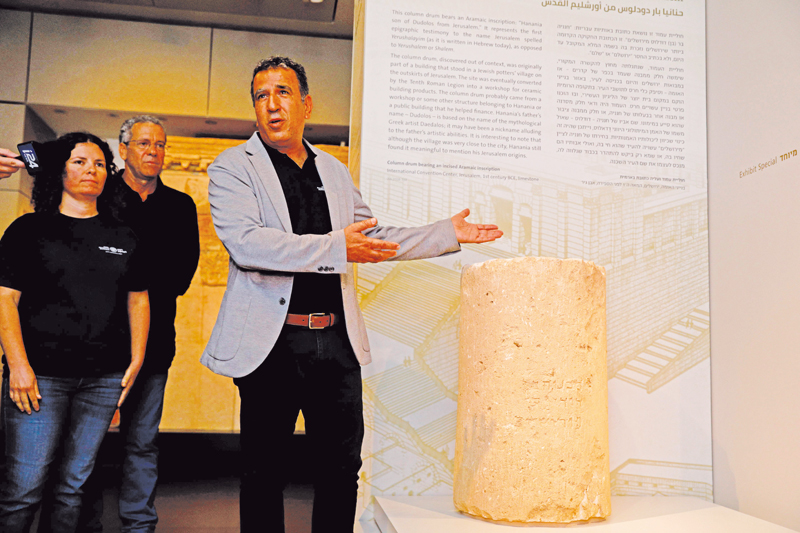

Israel unveiled on Tuesday a stone pillar engraved with an ancient inscription showing that the spelling of Jerusalem in its present-day Hebrew form was already in common use some 2,000 years ago.
During construction work in February in Jerusalem, archaeologists unearthed the pillar with the inscription “Hananiah son of Dodalos of Jerusalem,” written in Aramaic with Hebrew letters.
The Hebrew spelling of the city — pronounced Yerushalayim — is the same today.
The name of the city in that form appears only rarely from the period of the second Jewish temple (first century AD) and usually in religious and political contexts, said David Mevorach of the Israel Museum, where the stone is now being exhibited.
The city’s name appears several hundred times in the Bible, almost always in the slightly different form of Yerushalem and only five times as Yerushalayim, said Yuval Baruch of the Israel Antiquities Authority.
Yerushalayim is also used on a Jewish coin dating from the time of the Great Revolt against the Romans (66-70 AD).
“This inscription is important because it’s a daily thing,” said Mevorach.
“It’s not for any religious or messianic or propaganda purposes. It’s a person identifying himself from the city.”
Baruch said “right now we understand that, for sure, in the second temple period, some people in this area of Jerusalem, when they want to say or to read or to spell the name of the city, they use the same way as we use today, Yerushalayim.”
“We understand that the name has a very deep root... It’s not something that was created in the diaspora.”
He added that “even if you are a kid in school... they can read 50 per cent of the letters.”
The stone was originally part of a Jewish potter’s village dating to the second century BC near Jerusalem.
The site, now inside the city, became the Roman 10th Legion’s workshop in the early second century AD for ceramic building material.
It was the same legion that destroyed Jerusalem and the second Jewish temple in 70 AD.
The stone was reused as part of a row of columns along a basin.
Since it was removed from its original spot, details of its previous use are unclear.
Mevorach said Hananiah may have been an artist or artisan advertising his workshop or the stone could have resulted from a donation to a public structure.
As for Dodalos, it may have been a nickname referring to Daedalus, the craftsman in Greek mythology, said Mevorach.
It “hints to this long-time tradition of Jews living here adopting the ways of the Greeks” after the conquest of Alexander the Great, he said. — AFP
Oman Observer is now on the WhatsApp channel. Click here



